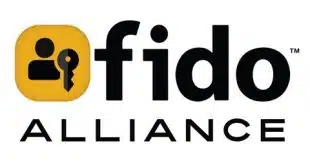Smaller retailers haven’t yet closed the EMV-acceptance gap with big ones, but they are making progress on installing EMV chip card readers at the point of sale, according to findings from a recent survey for the National Retail Federation.
The online poll found that 60% of small brick-and-mortar retailers had installed EMV terminals as of this spring, and another 10% were expected to have done so by July, bringing the total to 70% thus far, the Washington, D.C.-based trade group reported last week. The NRF said it expects that 81% of small retailers will have EMV card readers by year’s end.
In contrast, an earlier NRF survey of mid-sized and large retailers found that 86% of respondents expected to have EMV equipment installed by the end of last year, and 99% planned to have it by the end of 2017.
“With each chip reader averaging $2,000 when installation and other costs are factored in, small retailers have generally lagged behind larger retail companies with deeper pockets in the changeover from traditional magnetic-stripe cards,” Mallory Duncan, the NRF’s senior vice president and general counsel, wrote in a post on the NRF’s Web site.
Germany-based research firm GfK conducted the recent survey, which queried 750 merchants in all 50 states and the District of Columbia. The majority of respondents had less than $7.5 million in annual sales and fewer than 100 employees, an NRF spokesperson tells Digital Transactions News.
The big impetus for the chip card terminal deployments was the payment card networks’ October 2015 U.S. liability shifts that assigned to merchants financial responsibility for any resulting counterfeit fraud if their terminals couldn’t read the chip on a customer’s card. Previously, card issuers absorbed most such fraud costs.
Some 63% of survey respondents said their businesses could not afford the risk of more fraud liability, the NRF said. Still, 19% have no plans to adopt chip cards, with 55% of that group saying their businesses are not at high risk for credit card fraud.
The NRF often has been at odds with card issuers and the bank card networks about the usage of PINs with the new EMV cards. Most U.S. banks and credit unions are issuing EMV debit cards that, like the mag-stripe cards they’re replacing, may require the cardholder to enter a PIN for a purchase, depending on the merchant’s preference. But, just as before, the vast majority of U.S. EMV credit cards require only a signature for cardholder authentication.
Visa Inc. has said that chip-and-signature provides sufficient protection against fraud. The NRF has countered that signature authentication does not protect against lost-and-stolen card fraud, and routes more transactions to the Visa/Mastercard networks and generates more interchange income for issuers than if transactions went to rival PIN-based networks.
Of the 750 small merchants surveyed, “49% said their businesses would be more secure if credit cards required a PIN, which is standard in most parts of the world where chip cards are used,” Duncan wrote. “Only 16% disagreed, with the remainder neutral.”




